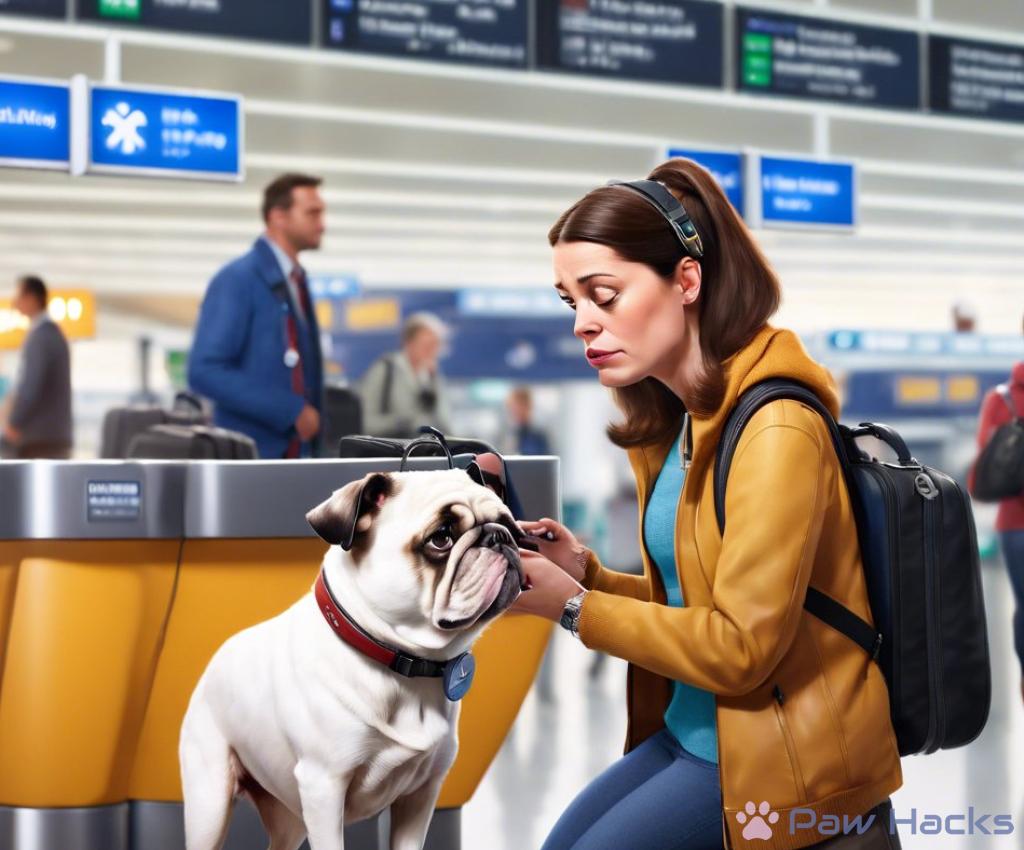Air Travel with Brachycephalic Breeds
Understanding the Risks: Why Air Travel Can Be Dangerous for Brachycephalic Breeds

Brachycephalic breeds, known for their distinctive flat faces and short muzzles, include popular pets like Bulldogs, Pugs, and Persian cats. Unfortunately, their unique anatomy can pose serious health risks during air travel. Understanding these risks is crucial for pet owners who wish to travel with their furry companions.
These breeds are prone to a condition known as brachycephalic obstructive airway syndrome (BOAS), which affects their ability to breathe efficiently. This condition can lead to severe complications, especially in the pressurized and often stressful environment of an aircraft.
Air travel can exacerbate the existing health issues faced by brachycephalic breeds. Due to their compromised respiratory systems, even minor stressors can lead to significant health problems. The following factors contribute to the dangers these pets may face:
- Reduced oxygen levels at high altitudes
- Increased cabin temperature
- Restricted airflow in cargo holds
- The potential for panic or anxiety during the flight
Pet owners must weigh these risks carefully before deciding to travel with their brachycephalic companions.
Before booking a flight, it’s essential for pet owners to consider alternatives and solutions to ensure their pets’ safety. Here are some important steps to take:
- Consult with a veterinarian to assess your pet’s health.
- Consider alternate modes of transportation, like driving.
- Research airlines that have specific policies for brachycephalic breeds.
By taking these precautions, pet owners can better safeguard their beloved pets from the dangers of air travel.
Preparing for Takeoff: Essential Tips for Flying with Flat-Faced Dogs
Traveling with brachycephalic breeds requires special attention and preparation. Given their unique anatomical features, pet owners must take proactive steps to ensure a smooth journey. The right preparation can significantly reduce the risks associated with air travel, allowing both pets and owners to enjoy their adventure together.
Not all airlines are created equal when it comes to accommodating pets, especially those with brachycephalic characteristics. When selecting an airline, it is vital to research their specific policies regarding flat-faced breeds. Some airlines may have restrictions on transporting these pets in the cargo hold due to the heightened risks involved. Opting for an airline that prioritizes animal welfare and has a good track record in handling sensitive breeds can make all the difference. Additionally, consider the temperature regulations and cabin pressure protocols of the airline. Ensuring that your chosen airline is experienced in managing the needs of brachycephalic dogs will provide peace of mind as you prepare for takeoff.
Before embarking on your journey, scheduling a thorough health examination with a veterinarian is essential. A vet can assess your pet’s overall health, focusing on any potential respiratory issues that may arise during air travel. It’s also wise to discuss your travel plans and seek advice on whether your pet is fit for flying. In some instances, your veterinarian may recommend taking certain precautions, such as medications to alleviate anxiety or improve respiratory function during the flight. An informed owner is a responsible owner; being proactive about health checks will help mitigate risks, ensuring that your furry friend is ready to travel safely.
Finding the Right Airline: What You Need to Know When Booking Flights with Brachycephalic Pets
Choosing the right airline is a vital part of planning air travel with brachycephalic pets. Not all airlines provide the same level of care and accommodations for flat-faced breeds, and being informed can make a significant difference in the safety and comfort of your furry companion during the journey. Below are some essential factors to consider when selecting an airline that prioritizes the well-being of your pet.
Before booking your flight, it’s crucial to investigate the specific policies and regulations of various airlines regarding brachycephalic breeds. Many airlines have implemented strict guidelines due to the health risks associated with air travel for these animals. Here’s what you should look for:
- Cabin vs. Cargo: Some airlines may only allow brachycephalic pets in the cabin, while others might not permit them to travel in cargo holds at all.
- Breed Restrictions: Certain airlines maintain lists of prohibited breeds; ensure your pet is not listed.
- Health Documentation: Many airlines require a health certificate signed by a veterinarian, particularly for brachycephalic breeds.
- Temperature Control: Review the airline’s policies on temperature regulations during travel, as extreme heat can be particularly harmful.
Looking into customer experiences can provide valuable insight into how well an airline accommodates pets, especially those with special needs. Consider the following avenues:
- Online Reviews: Websites and forums dedicated to pet travel often feature firsthand accounts from other pet owners.
- Social Media Feedback: Platforms like Facebook and Twitter can be helpful for gauging real-time customer experiences.
- Word of Mouth: Don’t hesitate to ask fellow pet owners for recommendations based on their travel experiences.
| Airline | Cabin Travel Allowed | Breed Restrictions | Health Certificate Required | Temperature Restrictions |
|---|---|---|---|---|
| Airline A | Yes | Limited | Yes | Above 85°F |
| Airline B | No | All Brachycephalic | No | Above 80°F |
| Airline C | Yes | Specific Breeds | Yes | Above 90°F |
By thoroughly researching and comparing airline options, you can ensure that your travel experience is as safe and comfortable as possible for your beloved brachycephalic companion. Making informed decisions will help pave the way for a worry-free journey, allowing both you and your pet to focus on the adventure ahead.
In-Flight Care: How to Ensure Your Brachycephalic Dog Stays Safe and Comfortable
Air travel can be a stressful experience for both pets and their owners, especially for brachycephalic breeds. Keeping your flat-faced companion calm and comfortable during the flight is essential for their well-being. Preparation is key, and it begins before you even board the plane. Remember, a relaxed pet is less likely to experience respiratory distress or panic, making the journey smoother for everyone involved.
Consider investing in a comfortable travel crate that allows your pet to stand, turn around, and lie down with ease. This not only meets airline regulations but also provides a familiar space during the flight. Padded bedding can enhance comfort, while familiar toys or blankets can offer a sense of security. Moreover, acclimating your pet to their travel crate ahead of time can help reduce anxiety.
Once you’re airborne, it’s crucial to monitor your pet closely for any signs of distress. Look out for symptoms such as excessive panting, drooling, or restlessness. Brachycephalic breeds are especially prone to overheating, so it’s vital to keep an eye on their breathing. Keep your pet hydrated by offering water when possible, but avoid feeding them a heavy meal right before the flight to minimize the risk of nausea.
If you notice your pet showing signs of discomfort, it might be helpful to gently reassure them with calming words or soft petting. Additionally, consider discussing with your veterinarian prior to the trip about the potential use of anxiety-reducing medications. These can be particularly useful if your pet is known to experience travel anxiety.
Airplane cabins can present unique challenges for brachycephalic breeds due to fluctuating temperatures and cabin pressure. Ensuring a comfortable environment is crucial for their safety. Dress your pet in breathable fabrics to help regulate their body temperature. If your flight is long, bring a light blanket to provide warmth without overheating.
Also, be aware of the air vents in the cabin. Positioning your pet away from direct airflow can prevent them from becoming chilled or overheated. During the flight, remain attentive to your pet’s needs, and if possible, check in with airline staff regarding any special accommodations for brachycephalic breeds.
| Aspect | Tips for In-Flight Care |
|---|---|
| Comfort | Use a padded travel crate and familiar items. |
| Hydration | Offer water regularly, avoid heavy meals. |
| Monitoring | Keep an eye out for signs of distress. |
| Temperature | Avoid direct airflow and dress appropriately. |
By taking these proactive steps, pet owners can ensure that their brachycephalic dogs remain safe and comfortable throughout the journey. In-flight care is not just about keeping your pet calm; it’s about creating a supportive environment that prioritizes their unique needs. With the right planning and attention, your travel experience can be both enjoyable and safe for your beloved companion.
Post-Flight Considerations: What to Watch For After Traveling with Brachycephalic Breeds
Once you and your brachycephalic pet have safely landed, the journey isn’t quite over. It’s essential to stay vigilant for any post-flight health issues that may arise. The conditions experienced during air travel can sometimes trigger complications that may not be immediately apparent. Therefore, pet owners should be proactive in observing their pets closely for any signs of distress or discomfort in the hours and days following the flight.
After the flight, it’s crucial to monitor your pet for any unusual behaviors or symptoms that could indicate health concerns. Here are some signs to keep in mind:
- Excessive panting or difficulty breathing
- Unusual lethargy or lack of energy
- Refusal to eat or drink
- Vomiting or diarrhea
- Persistent coughing or gagging
If any of these symptoms occur, it is advisable to consult a veterinarian immediately. Quick action can be vital in preventing serious health issues from developing.
To make the transition to your destination as smooth as possible for your flat-faced companion, consider the following steps:
- Provide a Calm Environment: After a stressful journey, your pet may need some time to decompress. Create a quiet space where they can relax and feel safe.
- Hydration is Key: Ensure your pet has access to fresh water. Dehydration can occur during air travel, so encourage drinking to rehydrate.
- Schedule a Post-Travel Vet Check: Even if your pet appears well, a visit to the veterinarian can help identify any underlying issues that may not be immediately visible.
- Resume Normal Routines: Get back to your pet’s regular feeding and exercise routines to help them adjust and feel more at home.
- Monitor for Long-Term Effects: Keep an eye on your pet’s behavior over the next few days. Any sudden changes should be discussed with your veterinarian.
By taking these precautions, you can help ensure that your beloved brachycephalic breed remains healthy and happy after air travel. Remember, a little extra care goes a long way in safeguarding the well-being of your furry friend.
Share this content:



